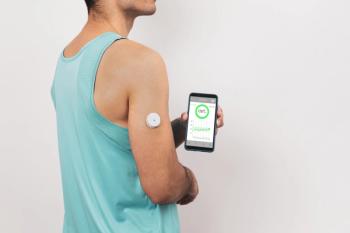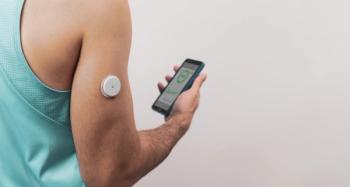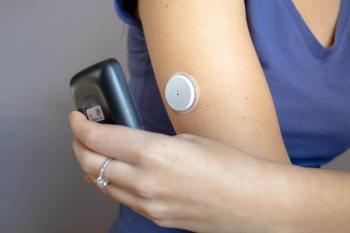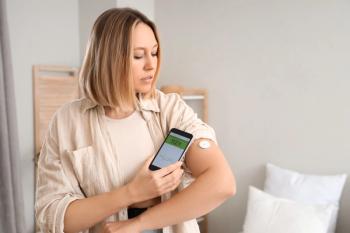
Children With T1D Who Report Higher CGM Satisfaction Have Better Glycemic Control
The 3 most common issues associated with higher satisfaction were “makes adjusting insulin easier,” “helps to keep low blood sugars from happening,” and “makes me feel safer knowing that I will be warned about low blood sugar before it happens.”
Children and adolescents with type 1 diabetes who report higher satisfaction with continuous glucose monitors (CGM) have better glycemic control and reduced glycemic risk index, according to a new study published in Diabetes Research and Clinical practice.1
Previous research has shown that CGMs have a positive impact on blood glucose control, but issues with low patient satisfaction continue to effect the long-term use of these devices. Barriers to satisfaction include too many alarms and error alerts, the hassle of wearing the devices, difficulty calibrating, and too much time needed to make the system work.1
“With the first systems, CGM satisfaction in the pediatric population was lower than neutral, although satisfaction and quality of life of young people and parents increased with subsequent improvements in sensor accuracy, convenience, and ease of use,” the authors wrote. “However, even with the best technology such as automatic insulin delivery systems, overall patient satisfaction is often unaltered and only in some cases improved.”
Investigators conducted a cross-sectional study to explore the influence of CGM satisfaction on glucose control in pediatric patients using different treatment methods. Data was gathered from patients with type 1 diabetes attending 14 pediatric diabetes clinics in Italy.
The study cohort included 210 patients between the ages of 8 and 18 and their parents who completed the Continuous Glucose Monitor Satisfaction Questionnaire. Data gathered from the questionnaire included age, gender, diabetes duration, sensor experience, type of CGM, insulin treatment modality, total daily insulin dose, and number of severe hypoglycemia and diabetic ketoacidosis events in the last 12 months.
Investigators found that the majority of patients wore a Dexcom G6 sensor and 36.2% used multiple daily injection systems, 27.6% used sensor augmented pumps, and 36.2% used automatic insulin delivery systems. BMI z-scores were similar across groups, but daily insulin requirements were slightly higher in patients who used multiple daily injection systems and automatic insulin delivery systems.
Automatic insulin delivery systems were associated with a higher time in range, as well as lower time above range and time below range. Sensor augmented pumps and automatic insulin delivery systems were associated with a higher frequency of annual telemedicine visits compared to patients using multiple daily injection systems.
Scores from the Continuous Glucose Monitor Satisfaction Questionnaire were greater than neutral for all 3 treatment modalities and patients using automatic insulin delivery systems reported the highest benefit. Patients with time in range greater or equal to 70% and glycemia risk index less than 40 reported higher benefits with CGM use.
Additionally, the 3 most common issues that cause lower satisfaction were “shows more glitches and bugs that it should,” “causes our family to talk about blood sugars too much,” and “interferes a lot with sports, playing outside etc.” The 3 issues associated with higher satisfaction were “makes adjusting insulin easier,” “helps to keep low blood sugars from happening,” and “makes me feel safer knowing that I will be warned about low blood sugar before it happens.”
Study limitations include the cross-sectional design, that patients used different systems which could provide different metric accuracies, and that the patients may not represent the global population of pediatric diabetes patients in terms of cultural, socioeconomic and healthcare system differences.
“[O]ur study confirms that CGM systems have a positive effect on glucose control in pediatric patients with T1D, and CGM satisfaction is an important patient-reported outcome to evaluate and the perceived benefits of CGM are associated with increased time in range and reduced glycemia risk index,” the authors concluded. “There are still a few barriers to real-world CGM use for all the different treatment modalities, and new technologies –along with continuing therapeutic education–could improve satisfaction and glucose control.”
Reference
1. Marigliano M, Pertile R, Mozzillo E, et al. Satisfaction with continuous glucose monitoring is positively correlated with time in range in children with type 1 diabetes. Diabetes Res Clin Pract. 2023;204:110895. doi:10.1016/j.diabres.2023.110895
Newsletter
Pharmacy practice is always changing. Stay ahead of the curve with the Drug Topics newsletter and get the latest drug information, industry trends, and patient care tips.





















































































































































